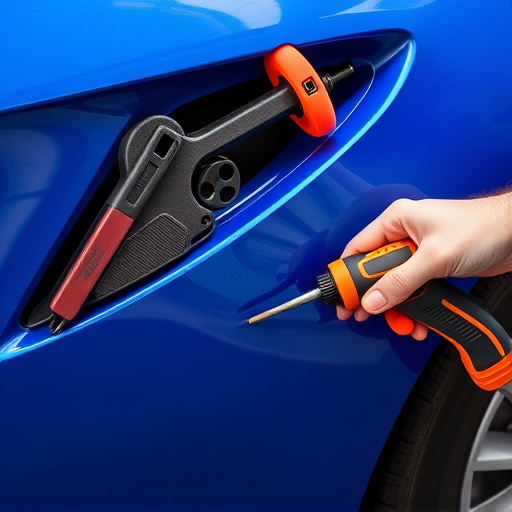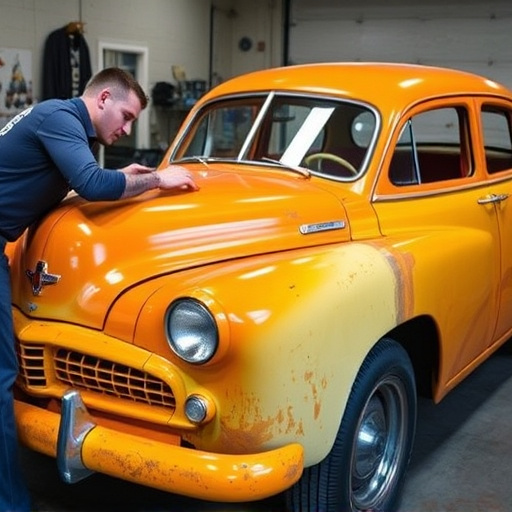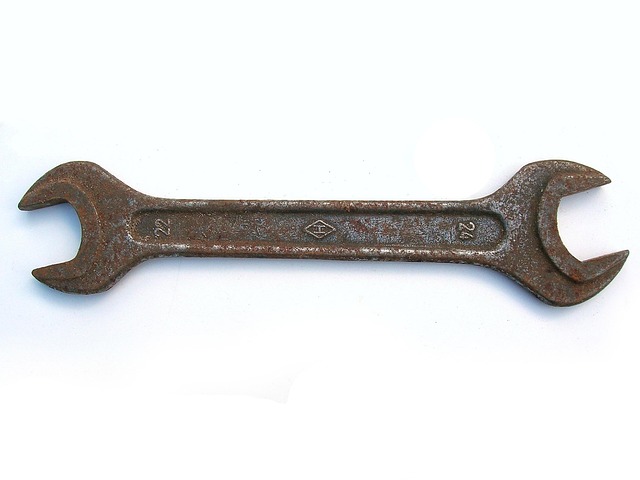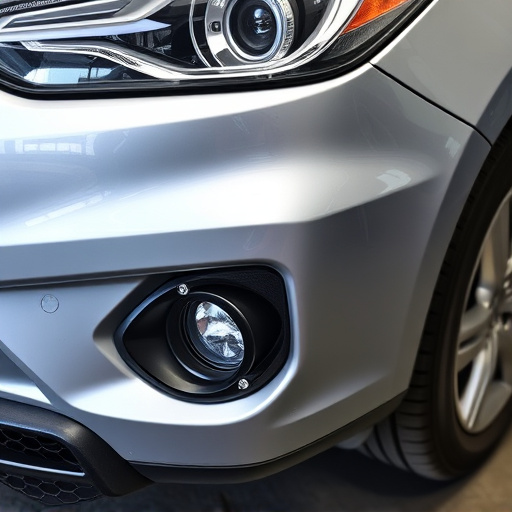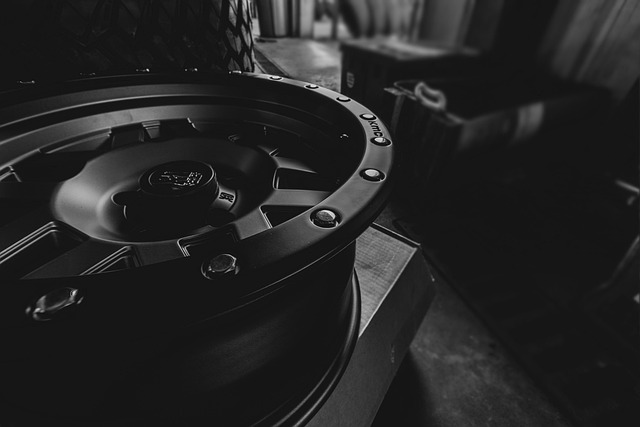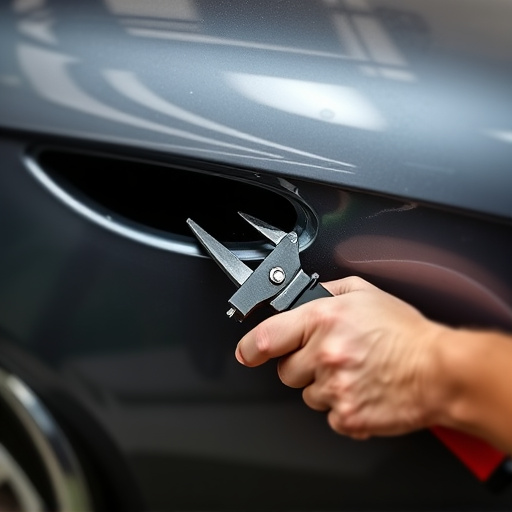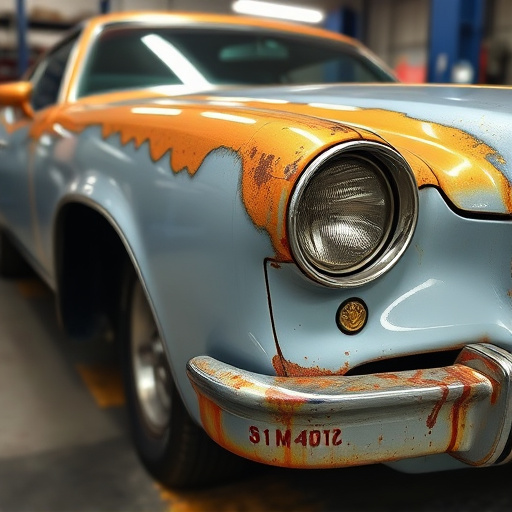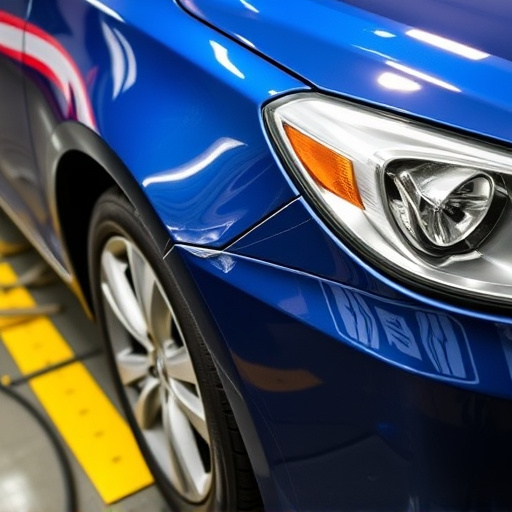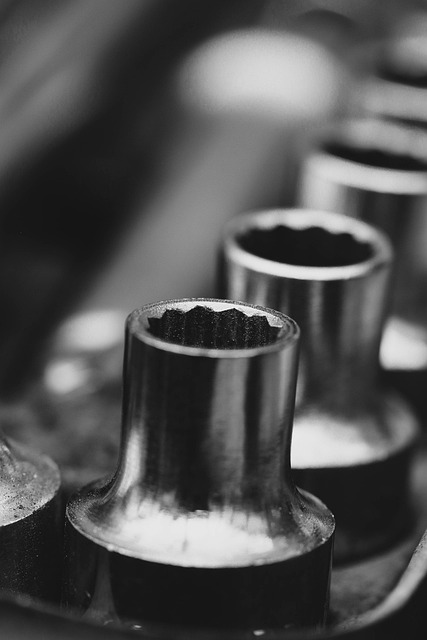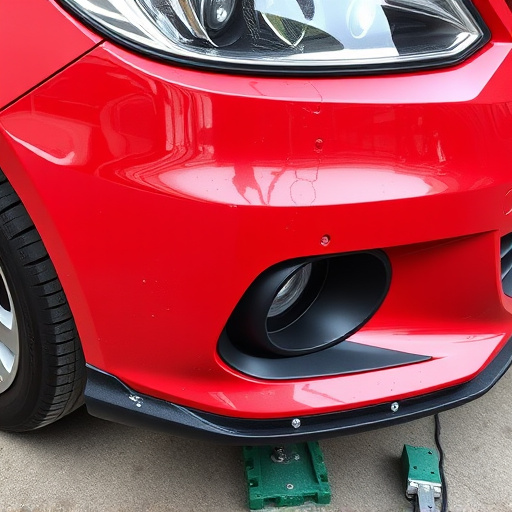Body panel insulation, using lightweight foams, composite fabrics, and polymeric films, is crucial for both aftermarket and original equipment manufacturer (OEM) applications, offering thermal regulation, noise/vibration reduction, corrosion prevention, and extended vehicle lifespan. Aftermarket installations require custom measurement and cutting, while OEM processes use standardized techniques. Future trends focus on lightweight, eco-friendly materials, driven by demand for customizable systems in electric vehicles, aiming to improve fuel efficiency, reduce emissions, and meet advanced car restoration needs.
“Body panel insulation is transforming the automotive industry, offering both functional and aesthetic advantages. This article delves into the world of aftermarket and original equipment manufacturer (OEM) applications, exploring the significance of proper body panel insulation. We’ll dissect the materials used, highlighting their benefits in enhancing vehicle performance, comfort, and durability. Furthermore, we’ll navigate installation considerations between aftermarket and OEM contexts and glimpse into future trends shaping this innovative technology.”
- Understanding Body Panel Insulation: Materials and Benefits
- Aftermarket vs OEM Applications: Installation Considerations
- Future Trends in Body Panel Insulation Technology
Understanding Body Panel Insulation: Materials and Benefits

Body panel insulation is a critical component in both aftermarket and original equipment manufacturer (OEM) applications. It involves the use of specialized materials to line and protect car bodies, serving multiple functional purposes. The primary materials used in body panel insulation include lightweight foams, composite fabrics, and advanced polymeric films. These materials are chosen for their exceptional thermal insulation properties, which help regulate the interior temperature of a vehicle, enhancing passenger comfort and reducing energy consumption.
One of the key benefits of body panel insulation is its ability to mitigate noise and vibration. By acting as a barrier between the exterior elements and the cabin, these insulations significantly reduce road noise and vibrations, providing passengers with a quieter and more comfortable ride. Furthermore, they play a crucial role in protecting against corrosion and moisture intrusion, which are common issues in car repair services, especially for bumper repairs and auto painting jobs. This not only extends the lifespan of vehicles but also ensures that any aesthetic modifications or repairs, such as those involved in aftermarket customization or OEM replacements, remain intact and free from damage.
Aftermarket vs OEM Applications: Installation Considerations

When discussing body panel insulation, a key consideration is whether the application is aftermarket or original equipment manufacturer (OEM). Aftermarket installations often require unique installation techniques due to the diverse nature of vehicle models and ages. Customization is crucial in these cases, as each car may have distinct panel shapes and sizes, especially with custom auto body repair or vehicle paint repair jobs. This necessitates precise measurement and cutting of insulation materials to fit seamlessly without compromising structural integrity.
In contrast, OEM applications benefit from standardized installation processes, as the panels are designed and manufactured to fit specific vehicle models. Body panel insulation for OEMs often involves more straightforward installation procedures, allowing for mass production and efficient quality control. However, even with OEM applications, attention to detail is vital to ensure proper adhesion of insulation materials, especially in challenging areas like curves or complex panel joints, ultimately contributing to a successful car body restoration process.
Future Trends in Body Panel Insulation Technology

The future of body panel insulation is set to be transformed by emerging technologies and a growing focus on sustainability. One key trend is the development of advanced materials that offer superior insulation properties while being lighter and more eco-friendly. These innovative solutions are designed to meet the demanding needs of both aftermarket and original equipment manufacturer (OEM) industries, aiming to reduce weight, improve fuel efficiency, and lower carbon emissions.
Additionally, there is a rising demand for customizable and adaptable insulation systems tailored to specific vehicle models and applications. This trend caters to the diverse requirements of the automotive industry, where car body restoration and auto body services are becoming more sophisticated. With the rise of electric vehicles (EVs), heat management and soundproofing become critical aspects of body panel insulation, requiring new strategies to address unique challenges presented by these advanced powertrains.
Body panel insulation has emerged as a game-changer in both aftermarket and original equipment manufacturer (OEM) applications, offering significant advantages in terms of weight reduction, fuel efficiency, and noise suppression. As technology advances, we can expect to see more innovative materials and methods in body panel insulation, further enhancing vehicle performance and passenger comfort. For enthusiasts and manufacturers alike, understanding the intricacies of body panel insulation is key to staying ahead in the ever-evolving automotive landscape.


